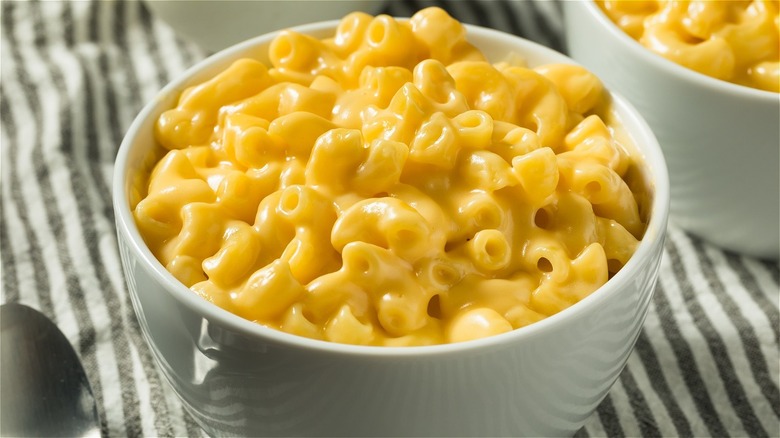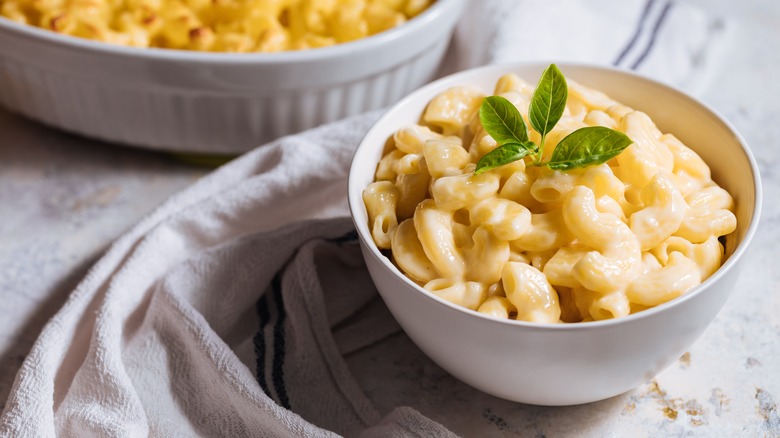The Mac And Cheese Origin Myth You Should Stop Falling For
The ultimate comfort food and perfect side dish for any occasion, mac and cheese in all its luscious glory is beloved by pretty much everyone. Even the lactose intolerant will sneak a bite just to get a mouthful of its creamy, rich flavor for a brief moment. The tubular macaroni noodle originated in Italy and was likely inspired by Arabian cuisine, but how did it become a classic pairing with the cheesy sauce we know today?
Maybe you've heard that Thomas Jefferson was the one who created modern-day mac and cheese, an understandable assumption since the third U.S. president ordered 20 pounds of macaroni after his trip to Italy in the late 1700s. He even requested an authentic Italian macaroni press to be shipped to his home at Monticello, and there exists a procured macaroni recipe written in his handwriting.
However neatly this all fits into the narrative that Jefferson founded the original mac and cheese recipe, this is just a myth. Though Jefferson hosted many dinner parties where it was served and helped popularize the dish in America, he's by no means the inventor.
James Hemings created today's mac and cheese
On a trip to Europe, Thomas Jefferson brought with him his enslaved chef, James Hemings, to learn the ins and outs of French cooking from an expert chef — including a French version of mac and cheese. However, the real reason Jefferson and his guests came to love the dish so much is because Hemings used his culinary prowess to improve the dish in his own way. Per "Dining at Monticello: In Good Taste and Abundance," "Enslaved Black people were taught to follow written recipes; but they were also talented culinary artists in their own rights, and as with soul food today, added their own touch beyond the text" (via Afro American Newspapers).
Hemings made sure to pass on the recipe secrets to his brother Peter, who would become Monticello's next chef. Though Hemings was granted freedom from slavery in 1796, his mac and cheese recipe remained a Monticello favorite and would be featured in the cookbooks of history from then on. To this day, mac and cheese holds a special significance in Black culture, recognized as a symbol of progress and ingenuity. Per EatingWell, the original dish was made casserole-style, with cooked elbow macaroni, butter, and Cheddar cheese layered in a dish, topped with milk, and baked until gooey.

